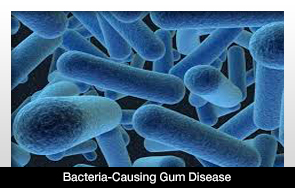 |
Students of the University of Maryland Dental School “represent a link, a conduit, to the future,” due to the school’s leadership in teaching digital dentistry, Gary Hack, DDS, said today in Amsterdam at the annual meeting of the Association of Dental Educators in Europe (ADEE), “Digital Dentistry: A Space Odyssey.”
“I believe that the University of Maryland Dental School is one of the most high-tech, digitally advanced dental schools in the world,” said Hack, an associate professor of operative dentistry at the school. He presented a list of technological innovations that have been implemented by Dental School Dean Christian S. Stohler, DMD, and his faculty since completion of the school’s modern building in downtown Baltimore four years ago.
Stohler’s vision is to teach students to use existing and cutting edge technology, which is not always evolving as it should in the dental profession due to a preponderance of dentists who operate in small independent practices. Most physicians, on the other hand, tend to be more attached to the latest technology in a medical center or hospital.
Hack presented a University of Maryland progress report to a session of the ADEE called “Digital Technologies in Dental Education: The Maryland Experience.” He said before speaking, “My goal is to let the European Dental Community know what we have achieved at Maryland and to offer them our support in their endeavors.”
Today, at the University of Maryland Dental School, all of the dental chairs and preclinical simulation chairs are wired for monitoring from anywhere in the building, said Hack. Instructors can monitor each student, each procedure, the chair location, the order of instruments being used, and for how long a period of time each instrument is used by that student. Each dental chair can even, on its own, send email alerts to technicians on any malfunction, or if a light bulb needs changing, or if an instrument is not performing properly.
The Dental School is a widely recognized leader in teaching the use of computer-aided technologies that aid in the design, analysis, and manufacture of dental restorations. The dental CAD/CAM system (computer-aided design and computer-aided manufacturing) designs, analyzes, and mills tooth crowns and partial crowns in a single patient visit lasting less than an hour. This year, said Hack, all 135 of the school’s second-year dental students will have a hands-on experience with chairside CAD/CAM, acquiring a digital impression, designing their restoration on the computer, and sending this digital information to a milling machine to have their restorations fabricated.
The University of Maryland is the only dental school in the country with total digital radiology in its preclinical programs, providing a seamless transition for students to working with live patients in the clinics at the school, which also have total digital radiology.
In September 2006, the University of Maryland Dental School moved into its new, state-of-the-art building, which was designed to be equipped with the latest and most technologically advanced dental technologies available at the time. Hack said that a major component of the process was selection, development, and implementation of the technology.
It now features digital dental chairs, electric handpieces, digital radiology, intraoral cameras, rotary endodontics, implant simulation, virtual dental school environments, haptic technologies, CAD/CAM, virtual keyboards, virtual patients, electronic patient records, and remote learning.
“The school has cooperated with industry to push the envelope,” Hack said. “Now we can provide high-technique simulation to better prepare our students for 21st century dentistry, and to create a “seamless” transition for the students from the preclinical experience to the patient clinic.”
Last year the school also implemented the world’s first virtual dental school with “Second Life,” a 3-D modeling software. Students venture into Maryland’s virtual dental school to “experience” aspects of dentistry ranging from lessons in best dental hygiene practices to infection control and anatomy. The software allows students to control a second life figure of themselves, called an “avatar,” by mouse and keyboard or voice-controlled headsets.
Also last year, the school, with the help of local and state agencies, opened a clinic in Perryville in northern rural Maryland to help meet a dire need for better oral health opportunities in that region. The dentists, faculty, and patients at the University of Maryland Dental School at Perryville benefit from a fully integrated system of electronic patient records. The records system is also a teaching tool for students and a functional model that is expected to be applied to the entire school soon.
 |











